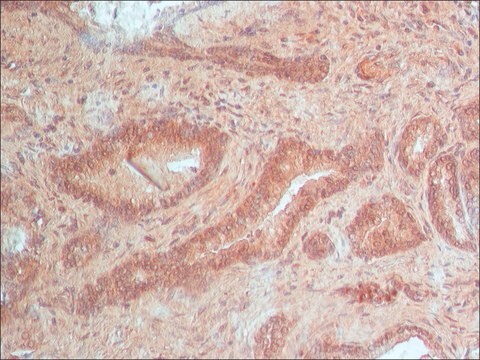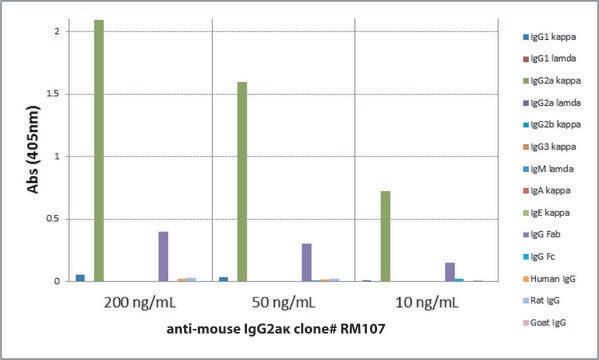SAB5500165
Anti-Progesterone Receptor antibody, Rabbit monoclonal
recombinant, expressed in proprietary host, clone SP2, tissue culture supernatant
About This Item
Empfohlene Produkte
Biologische Quelle
rabbit
Qualitätsniveau
Rekombinant
expressed in proprietary host
Konjugat
unconjugated
Antikörperform
tissue culture supernatant
Antikörper-Produkttyp
primary antibodies
Klon
SP2, monoclonal
Speziesreaktivität
human (tested)
Speziesreaktivität (Voraussage durch Homologie)
bovine, rabbit, pig
Methode(n)
immunohistochemistry: 1:400
Isotyp
IgG
UniProt-Hinterlegungsnummer
Versandbedingung
wet ice
Lagertemp.
2-8°C
Posttranslationale Modifikation Target
unmodified
Angaben zum Gen
human ... PGR(5241)
Allgemeine Beschreibung
Progesterone receptor (PGR) belongs to the steroid/thyroid hormone receptor family of ligand-activated transcription factors. It possesses the amino-terminal AF1 region, the central DNA-binding domain (DBD) and the carboxyl-terminal ligand- binding domain (LBD). The PGR gene is localized on human chromosome 11q22.1.
Immunogen
Biochem./physiol. Wirkung
which modulates the transcription of target genes in response to progesterone and other hormones. It is phosphorylated on multiple sites and at times, the phosphorylation changes according to the hormone involved. During hormone unavailability, PGR is bound to heat shock proteins. When the ligand binds, it causes the release of PGR from heat shock proteins. It is then translocated to the nucleus, where it binds to its DNA response elements (SREs) and to the components of the transcription machinery. PGR also binds to chromatin templates and results in chromatin remodeling adjacent to the PGR-binding sites.
Leistungsmerkmale und Vorteile
Physikalische Form
Haftungsausschluss
Sie haben nicht das passende Produkt gefunden?
Probieren Sie unser Produkt-Auswahlhilfe. aus.
Lagerklassenschlüssel
10 - Combustible liquids
WGK
WGK 2
Flammpunkt (°F)
Not applicable
Flammpunkt (°C)
Not applicable
Analysenzertifikate (COA)
Suchen Sie nach Analysenzertifikate (COA), indem Sie die Lot-/Chargennummer des Produkts eingeben. Lot- und Chargennummern sind auf dem Produktetikett hinter den Wörtern ‘Lot’ oder ‘Batch’ (Lot oder Charge) zu finden.
Besitzen Sie dieses Produkt bereits?
In der Dokumentenbibliothek finden Sie die Dokumentation zu den Produkten, die Sie kürzlich erworben haben.
Unser Team von Wissenschaftlern verfügt über Erfahrung in allen Forschungsbereichen einschließlich Life Science, Materialwissenschaften, chemischer Synthese, Chromatographie, Analytik und vielen mehr..
Setzen Sie sich mit dem technischen Dienst in Verbindung.






